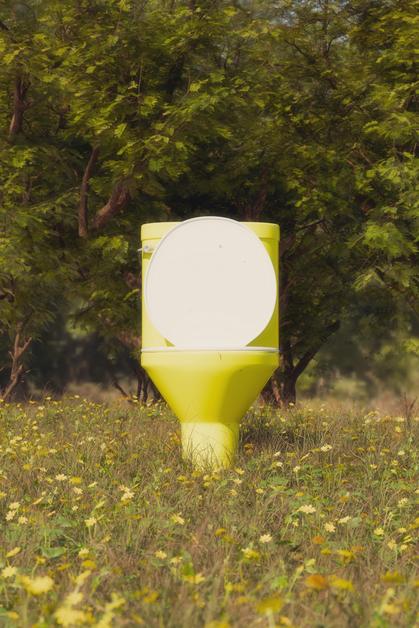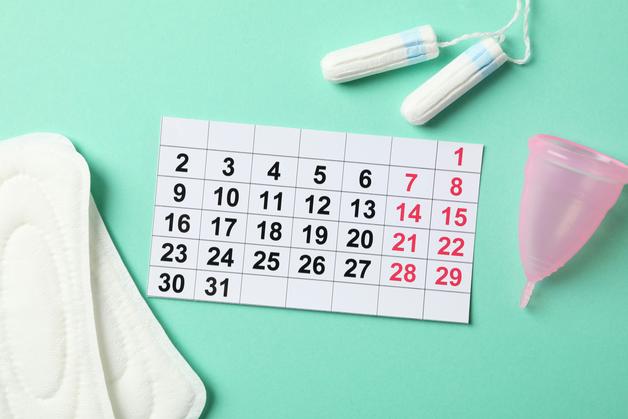The world of childbirth comes with its share of questions, worries, and unexpected challenges. Sometimes, it’s the unfamiliar words—like “Obstetric forceps”—that trigger the most uncertainty. What does it really mean when a doctor mentions this instrument? Is it safe? Why are they used? For parents preparing to welcome a baby, facing the possibility of interventions can stir up both anxiety and relief. The dance between ensuring a safe delivery and respecting each individual’s preferences is delicate. Obstetric forceps are not an everyday tool, but when they are suggested, it’s often after careful consideration by a team wanting the best outcome for both mother and child. Let’s unpack everything you need to know, bringing both clarity and calm to a topic that deserves both.
Understanding Obstetric Forceps: Structure, Types, and How They Work
Obstetric forceps may appear intimidating at first glance—large, metallic, curved, somewhat archaic in their silhouette. Yet, behind their design lies centuries of medical evolution. These instruments are constructed with curved blades (sometimes called “branches”) that fit softly around the baby’s head, joined by a pivot or locking mechanism for stability. Crafted from surgical stainless steel, the goal is efficiency without compromising safety. Ever wondered about the various shapes? It isn’t just aesthetics: different designs address specific birth scenarios.
Consider the Simpson forceps with their elongated blades—often called upon for deliveries when the baby’s head is well-positioned and low in the pelvis. The Kielland forceps have a sliding mechanism, ideal for rotating a stubbornly positioned head. The Piper forceps serve a rare purpose, tailored for breech presentations when the baby’s head is the last to emerge. For more delicate or preterm cases, the Wrigley forceps come into play, with shorter, more compact arms. The diversity in forceps isn’t anecdotal; it’s a toolkit designed for nuanced situations—helping clinicians adapt to the anatomy of both mother and baby.
Obstetric forceps are used for three main reasons: to aid mothers too exhausted to push further, to quickly deliver babies at risk of distress, or to resolve certain positional challenges. But how do professionals know when, and whether, to reach for them?
When Forceps Are Used: Indications, Medical Thought Process, and Parental Involvement
Imagine labor stretching long into the night. Fatigue creeps in, and despite every effort, progress stalls. Or, perhaps fetal monitoring detects changes—heartbeat variations that signal urgency. Obstetric forceps rarely represent a first choice. Rather, they answer when:
- Fetal monitoring (cardiotocography) shows fetal distress—abnormal heart patterns, hints of potential oxygen deprivation.
- Labor grinds to a halt, often due to poor positioning (asynclitism, occiput posterior), or the baby’s head ceases to descend.
- Maternal medical risk makes further pushing unsafe—think severe preeclampsia, heart conditions, or overwhelming physical exhaustion.
- Special cases: twins, preterm infants, or emergency scenarios.
The decision is never casual. Protocols demand full cervical dilation, ruptured membranes, and a well-engaged fetal head (meaning the baby is low and ready, just not progressing). Obstetricians conduct ultrasound assessments, confirm fetal orientation, and communicate every step. Anesthesia—whether an epidural or local block—ensures comfort. No step is taken lightly; each is deliberate.
Consent forms, open explanation, and collaborative decision-making are essential. Parents sometimes worry about being sidelined, but transparency is standard. “Why do we recommend forceps here?” “What are your wishes?” These are conversations to expect.
How Forceps Delivery Happens: Practical Steps and What You May Experience
Let’s demystify the process. Once a decision for forceps is agreed:
- The birthing person is placed in a supportive position, often lithotomy (legs supported).
- Sterile drapes, meticulous cleaning, and a dedicated team (midwife, obstetrician, anesthesiologist) prepare the environment.
- Lubricated and introduced gently, the first blade curves along one side of the baby’s head; the second mirrors this on the other side. Each placement is checked.
- With contractions, the obstetrician applies synchronized traction—never rushing, watching for progress, and always ready to pause.
- As soon as the head begins to crown, the forceps are removed and the baby is guided out by hand.
In many cases, parents report barely registering the steps amid the focus and support from their medical team. Recovery begins the moment the child arrives— and the team remains close by for both physical and emotional aftercare.
Forceps Versus Vacuum and Spatulas: Making Sense of the Differences
You might hear about a “vacuum delivery,” prompting confusion: are these tools interchangeable? Not quite. Forceps, with their curved blades, offer solid guidance—useful when more control is needed, especially for rotation. Vacuum extraction involves a soft cup attached to the baby’s scalp, pulling gently in sync with contractions. Sometimes, the choice comes down to minimizing maternal injury (favoring the vacuum), or needing precise control (favoring forceps). Spatulas, a third option, resemble flat blades. Unlike obstetric forceps, they don’t pull—they nudge, suited for extremely fragile babies or situations where too much pressure could risk complications.
No option is one-size-fits-all. Instead, they form a set of tools, each with strengths and limitations, selected according to need, baby size, positioning, and maternal tissue.
Safety, Risks, and What Science Reveals
The safe use of obstetric forceps is a testament to modern obstetric training. But, as with any intervention, potential risks need honest discussion.
For Mothers
- Perineal tears or vaginal lacerations may appear, possibly needing stitches or an episiotomy (a small cut to widen the opening).
- Some experience temporary perineal soreness, managed with pain relief and gentle care.
- Rare consequences include extra pelvic floor injury, hemorrhage, or, if infection-control falters, infection.
- Pelvic floor rehabilitation is often suggested, using guided exercises to restore strength and support a smooth return to normal urinary and sexual function.
For Babies
- Transient marks or bruising, where the blades pressed the skin—typically fading in days.
- Occasionally, minor scalp abrasions or bruises.
- Infrequent facial nerve palsy (a temporary weakness), extremely rare when specialists handle the procedure.
- Very rarely, bone or skull injury, usually only with particularly complex, urgent cases.
Clinical research reassures: with correct technique, strict criteria, and practiced hands, obstetric forceps do not meaningfully increase the chance of lasting problems for mother or child. Most babies born this way have normal, healthy outcomes.
Alternatives to Forceps: Choices and Decision-Making
If forceps sound intimidating, you might wonder what else is possible. Here’s a quick glance at the major alternatives:
- Vacuum delivery: Less pressure on maternal tissues, better for certain positions or babies with robust scalps, though sometimes paired with a visible scalp swelling (“chignon”) that disappears quickly.
- Spatulas: Suited for extremely fragile or premature babies.
- Cesarean section: A surgical option, reserved for circumstances where vaginal birth is impossible or carries too much risk. Not without risks of its own—blood loss, surgical complications, longer recovery.
- Supporting maternal effort: posture changes, incentives, or oxytocin infusions (synthetic hormones to strengthen contractions) may sometimes preempt the need for instruments.
Each path is paved with detailed discussions: advantages, downsides, and the unique priorities of both family and clinical team. The most important voice? Yours, in partnership with your practitioners.
Preparation and Prevention: What Can Parents Do?
Confidence is built long before the delivery room. Antenatal care holds the key:
- Regular monitoring allows the care team to spot emerging trends—like slowed growth or unusual positioning—early on.
- Perineal massage in late pregnancy, as well as tailored mobility and pelvic exercises, may help minimize birth injuries.
- Prenatal classes inform parents about delivery scenarios, pain relief options, and what to expect with interventions—including obstetric forceps. Being informed transforms apprehension into agency.
- These conversations offer a forum for hesitations, building trust between parents and their clinicians. No question is too small; no worry dismissed.
Recovery and Aftercare: Healing Body and Mind Following Forceps Delivery
Recovery is unique to each family. The initial days often bring sensitivity around the perineum, best managed with gentle hygiene, prescribed pain relief, and sometimes, cool compresses. For those who experience tears or soreness, patience and kindness toward oneself are especially important. Targeted pelvic floor rehabilitation supports faster, stronger recovery and can prevent downstream issues like incontinence.
Emotionally, it’s common to feel everything from gratitude to frustration—or even disappointment if birth didn’t go as imagined. Open support is vital. Conversations with maternity staff, parenting groups, or, when needed, mental health professionals, offer reassurance. For babies, attention centers on feeding, early development, and regular follow-up to catch any transient marks or concerns.
The journey through a forceps delivery calls for resilience, trust, and attention—qualities that every parent brings, no matter how the story unfolds.
The Historical Perspective: Where Obstetric Forceps Began, and Where They’re Heading
Few tools in modern medicine are as rich in history as obstetric forceps. Originating with the Chamberlen family in the 16th century—who kept their invention secret for decades—these instruments have evolved hand in hand with advances in anatomical science, hygiene, and surgical precision. Today’s regulatory standards mean only highly trained obstetricians perform forceps deliveries under defined guidelines and after patient consent. Continuing professional education, the use of simulation technology, and strict audit processes support parent and baby safety.
Contemporary trends see vacuum extraction rising in popularity, with obstetric forceps reserved for cases where control and rotation are paramount. The choice of method—forceps, vacuum, or cesarean—is no longer dictated by habit, but by a nuanced, individualized approach.
Key Takeaways
- Obstetric forceps are a specialized, time-tested tool, deployed only after thoughtful evaluation to assist vaginal birth when challenges arise, always with deep regard for mother and baby’s safety.
- Each forceps design—Simpson, Kielland, Piper, Wrigley—carries distinct applications, allowing obstetricians to tailor interventions to specific clinical needs and anatomical situations.
- Risks exist, ranging from perineal tears to temporary newborn bruising; however, rigorous selection criteria, excellent technique, and modern hygiene standards minimize these risks.
- Forceps are not the sole option: vacuum extraction, spatulas, and cesarean sections offer alternatives, chosen according to your needs and situation.
- Preparation—physical through exercises and classes, emotional through open conversations—empowers parents and smooths the path ahead.
- Recovery from a forceps delivery is supported by attentive aftercare, pelvic floor rehabilitation, and emotional support networks.
- Centuries of research and clinical refinement guide today’s use of obstetric forceps, emphasizing safety, skill, and respect for parental choice.
Whatever your experience, there are healthcare professionals and community resources ready to support you. For further personalized advice, health checklists, and parent-friendly information, download the Heloa app—a valuable companion throughout your family’s healthcare journey.
Questions Parents Ask
Can the use of obstetric forceps affect future pregnancies or deliveries?
It’s understandable to wonder about lasting effects. In most cases, having a forceps-assisted birth does not prevent future vaginal deliveries or create ongoing problems. Sometimes, if significant perineal tears occurred, healthcare teams might suggest gentle pelvic floor rehabilitation to support future comfort and well-being. Each future pregnancy is approached individually, and your birth plan can be adapted according to your previous experiences and your wishes. If you have specific concerns, open discussion with your caregiver helps create the best plan for you.
Are there any ways to reduce the chances of needing forceps during childbirth?
While it’s not always possible to predict or avoid interventions, some strategies can support a smoother birth experience. Attending prenatal classes, staying physically active with suitable exercise during pregnancy, and practicing relaxation or breathing techniques can all be helpful. These steps may support your stamina and coping skills during labor. Of course, sometimes unexpected factors mean that assistance becomes the safest option—remember, these tools exist to help both the birthing person and baby. Trust that your team wants to respect your preferences as much as possible.
Is the baby awake or affected by pain when forceps are used?
Many parents worry about their baby’s comfort during interventions. Rest assured, newborns do not feel pain from forceps in the same way adults do, and any pressure is as gentle as possible. Babies may have temporary marks or slight swelling where the forceps rested, but these resolve quickly and are rarely uncomfortable. Medical staff remain attentive to your baby’s well-being throughout, and prompt care is always available for even the slightest concern.










